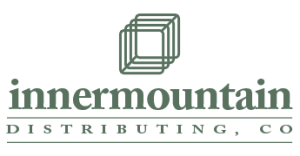“We just lost $50,000 in expired products.” Those words hit John, a small business owner, like a punch to the gut. His stock management system had failed, leaving him with warehouses full of worthless inventory and angry customers waiting for items he couldn’t deliver.
John’s story isn’t rare. In 2024, poor stock management costs U.S. retailers $224 billion annually due to overstocking and $125 billion from stockouts. Many business owners think effective stock management is just about keeping shelves full – they’re wrong.
Think about your business right now. Do you know exactly how many units of each product you have? Can you predict with certainty what you’ll need next month? If you hesitate, you’re leaving money on the table.
Stock management isn’t just counting boxes. It’s about keeping your cash flow healthy, your customers happy, and your business growing. When done right, it becomes your competitive edge. When done wrong, it can sink your company faster than a leaky ship.
The good news? You don’t need complicated systems or expensive inventory management software to master stock management. What you need are proven, practical strategies that work in the real world.
In this guide, we’ll show you eight essential stock management tips that successful businesses use daily. These inventory management techniques aren’t theoretical concepts – they’re battle-tested methods that have helped thousands of businesses, from corner stores to major retailers, maintain optimal stock levels and boost their profits.

Save 80% of delivery management time
We handle everything:
- Dedicated operations manager
- Real-time tracking dashboard
- Automated customer notifications
- Urgent issue resolution
Step 1: Implement Managing Inventory Control Strategies
-
Improve stock accuracy and efficiency.
-
Reduce costs and enhance supplier reliability.
-
Manage inventory effectively with strategies and tools.
Categorize Inventory
Break down inventory into manageable categories using ABC analysis. This method classifies items into three groups: A, B, and C. “A” items have the highest value and require tight control, “B” items are moderate, and “C” items have the lowest value. This way, businesses can focus more on crucial inventory management, minimizing risks of stockouts or excess inventory. Implementing ABC analysis can significantly reduce inventory management costs and increase profitability by ensuring critical items are readily available, thus meeting customer demands without delay.
Data Gathering and Classification by Inventory Management Software
You can start by collecting precise data on all inventory management items. Know the active, discontinued, and newly added products. It is better to organize them based on demand, cost, and risk. Accurate data analysis is crucial here, linking directly to overall business success. This will define how resources are allocated, helping in preventing overstocking or stockouts.
Set Reorder Points
Setting reorder points involves determining the minimum stock level for each category. You can use historical purchase and sales data to calculate precise reorder points. This ensures timely ordering is maintained. Consider safety stock levels to buffer against unexpected demand spikes. A proactive approach here prevents the disruption of supply lines, maintaining a smooth cash flow management of operations.
Using Historical Data
Leverage past sales data to set reorder thresholds accurately. Understand your demand patterns, peak selling periods, and the lead time from different suppliers. This understanding helps in setting reorder points, the production process, and ensuring there’s always enough stock to meet customer needs without tying up cash in excessive inventory.
Use Inventory Management System Tools
Employ specialized inventory management software to track stock levels in real time. Such inventory management tools provide seamless integration with existing inventory management systems for streamlined operations. The benefits include increased operational efficiency and improved customer satisfaction due to timely stock availability Acctivate.
Real-Time Tracking Features
You should choose inventory management software with features offering real-time updates on inventory levels. These inventory management systems boost accuracy by providing a live view of stock across various locations. This enables businesses to swiftly adapt to changes in supply or demand, enhancing overall efficiency and eliminating costly errors.
Regular Audits and Checks
Schedule regular physical inventory counts to ensure accurate records. Periodic checks help spot discrepancies between physical and digital inventory records, allowing for corrective actions. This practice ensures reliable data, necessary for decision-making and operational planning.
Reconciling Records
Integrate routine inventory audits with digital log reconciliation. This means matching the actual stock count with digital records regularly to ensure synchronization. Regular reconciliation reduces errors, enhances reliability, and promotes a transparent view of inventory management.
Maintain Supplier Relationships
Building and maintaining strong relationships with suppliers is crucial. Develop a list of backup suppliers to fall back on during supply disruptions. Regular negotiations with suppliers can secure favorable terms, ensuring continuous stock availability at the best possible price.
Establishing Supplier Networks
You can create a diverse supplier network to safeguard against supply chain interruptions. This involves identifying and vetting multiple suppliers for each key item. With reliable supplier networks, businesses are less vulnerable to supply chain issues and can negotiate better terms for pricing raw materials and delivery.
Step 2: Adopt Effective Supply Chain Solutions
-
Just-in-time (JIT) cuts down waste.
-
Cost-effective shipping saves money.
-
Efficient supply chain management boosts business.
Streamlined supply chain solutions can help businesses save money and stay competitive. This section will guide you through improving supplier processes and transportation methods. Investing in effective strategies can significantly enhance your operational efficiency and reduce overall costs. One approach to consider is utilizing specialized software for supply chain management, which can help automate and optimize various processes.
Streamline Supplier Processes
A well-organized supplier process is vital for successful supply chain management. One way to improve is by using Just-in-Time (JIT) ordering. JIT inventory management helps reduce waste by ordering materials only as needed. This minimizes inventory management costs and reduces storage needs. Ensuring a steady flow of goods reduces the risk of overproduction or holding onto outdated inventory. For JIT to work, strong supplier relationships are essential.
Communication is key in streamlining supplier relationships. Regular communication with suppliers prevents misunderstandings and delays. You can use technology like email, instant messaging, or dedicated supplier portals for communication. Real-time updates make it easy to coordinate orders and manage potential issues quickly.
Enhance Communication and Coordination
Maintaining open channels goes beyond email. Consider systems that integrate communication with order tracking. Use platforms offering visibility into supplier operations. Transparency in order progress and timelines is key. Understanding your supplier’s capabilities can better align processes and schedules.
Optimize Transportation
Transportation can make or break supply chain efficiency. Choosing cost-effective shipping options is critical. Compare rates from different carriers regularly to ensure the best value. You shouldn’t select based only on cost, though. Consider speed, reliability, and service level. A slower, cheaper method may not be ideal if it leads to missed deadlines or unhappy customers.
Efficient route planning reduces costs and delays. It is better to use route optimization software to plan the best delivery routes. This software accounts for variables like traffic, fuel costs, and distance. It helps ensure timely deliveries and reduces fuel expenses. Remember that efficient transportation doesn’t just save money. It can enhance customer satisfaction by delivering goods promptly.
Step 3: Apply Warehouse Optimization Techniques For Stock Management
-
Use space wisely to save costs and improve efficiency.
-
Integrate technology for better tracking and speed up operations.
-
Learn how to arrange, track, and manage items in your warehouse.
Efficient Space Utilization
Designate Zones for Fast-Moving Items
Separate areas in the warehouse for different types of products. Put fast-moving items near packaging or loading docks. This reduces time spent in picking and packing. Study the turnover rates of items using historical sales data. Set up a schedule for reviewing these zones monthly. Adjust placements based on changes in item demand. Use simple markers or signs to label these zones clearly. This encourages a routine for your pickers, minimizing confusion and errors.
Keep Similar Items Together
Group similar items. This simplifies the picking process. For example, store all small electronics together. It helps workers grab items quickly. You should organize shelves neatly and categorize items by how they are used or sold. You should make sure labels are clear—use large text and braille if needed. For bulky or heavy items, ensure proper safety measures are in place. Training sessions every quarter can keep the staff updated on these layouts. Consider a digital map of the warehouse layout available on tablets for your team.
Implement Technology
Consider RFID Tags for Tracking
RFID tags help track items accurately. They provide real-time data on inventory management. This can improve the company’s inventory management and accuracy by up to 13% compared to old methods. Install RFID readers at key points like entry and exit doors. Plan a day for system testing each month. This test helps in knowing if any tag or reader needs maintenance. You can use software that can integrate with your existing systems for better data analysis. Schedule regular training sessions for employees on RFID handling. Ensure your team knows the benefits and basic troubleshooting steps to reduce downtime.
Use Automated Systems for Stocking and Picking
Automate stocking and picking processes. It reduces manual errors and speeds up tasks. Automated guided vehicles (AGVs) are worth considering. They carry items from one point to another, saving time. Robotic arms can help with the stacking of goods. Weekly checks on these machines ensure they’re performing well. Update software every few months to keep it running smoothly. Consult the latest guidelines on safety around automation. The goal is to have a tech-driven warehouse that improves efficiency yet maintains safety protocols for all personnel involved.
Step 4: Use Demand Forecasting Methods
-
Base forecasts on past data to gauge demand.
-
Team up with sales for market insights.
-
Improve stock planning with detailed forecasting.
Analyze Past Sales Data
You can start by digging into your past sales records. This involves pinpointing which products sell well and which do not. Look for seasonal patterns. For instance, sales might go up during the holidays. To go deeper, calculate seasonal coefficients. This determines the ratio of sales in a month compared to the whole year.
Engage in Market Research
Research helps you stay ahead. Start by tracking your industry’s trends and future demands. Working with sales teams is key here. They interact with customers and can gauge short- and long-term demand.
Market research can come from customer surveys or feedback forms. Competitor analysis also plays a crucial role. Understanding what your competitors are doing can provide insight into consumer preferences and market dynamics.
Explore Demand Forecasting Types
It is important to know the different types of demand forecasting. These include macro-level forecasting, which looks at broader economic conditions, or micro-level forecasting, which drills down to specific sectors or customer groups. Short-term forecasting typically covers less than a year, while long-term forecasting spans years.
Implement Various Methods
Several forecasting methods exist. Trend projection uses past data to predict future trends. The Delphi Method gathers expert opinions to forecast market changes. Market research provides insights from customers. For more data-driven needs, econometric forecasting links sales data with external factors.
Combine Forecasting with Sales Inputs
Finally, work closely with your sales team. They gather real-time data during customer interactions, which is crucial for forecasting. Their insights help to quickly adapt to changing demands. This complements other methods you might be using.
A sales team’s input is critical in demand planning for both short-term and long-term inventory management strategies. Critics may say that this approach might be skewed by individual biases, but its value in adding a human touch to quantitative methods is undeniable.
Advanced Tips for Improving Profitability Through Stock Control
-
Reducing holding costs boosts cash flow.
-
Centralizing inventory cuts overheads.
-
Predictive analytics help to prevent overstocking.
Additional Advice and Methods
Reducing holding costs is a strategic move to enhance profitability. Holding costs include storage fees, insurance, and spoilage. To reduce these, businesses must manage stock levels efficiently. Adopt a just-in-time inventory system to keep only necessary items on hand. This can help reduce costs while ensuring supply meets demand.
Centralizing the inventory management process can significantly cut overheads. This involves managing inventory from one location rather than multiple sites, which helps streamline operations. Advantages include reduced storage costs, enhanced coordination, and improved inventory control. Companies like Coca-Cola and Amazon have showcased these benefits through centralized inventory management systems.
Common Pitfalls and How to Avoid Them
Overstocking is a frequent issue that significantly impacts profitability. Excess stock and excess inventory tie back up capital and increase holding costs. Predictive analytics can mitigate this risk. These tools leverage historical data and market trends to forecast demand accurately. The balance between maintaining sufficient stock levels and minimizing overstocking is critical.
Regularly reviewing supplier performance is vital for consistency in operations. Using supplier scorecards with weighted criteria such as quality, delivery time, and cost-effectiveness can be a helpful tool. These metrics help assess suppliers’ reliability and effectiveness. Ensuring consistency and reliability in supply chains enhances operational efficiency and profitability. To learn more, you can refer to Thurman Co’s guidance on supplier performance evaluation.
Tracking inventory reduction strategies also plays a critical role in profitability. Eliminating obsolete inventory and offering discount sales for slow-moving items can help free up cash flow. Effective inventory management ensures that items sit on the shelf for only as long as needed, without lost sales and minimizing costs associated with excess stock.
How Stock Management Control Improves Profitability
Effective stock control directly impacts profitability. It minimizes holding costs and optimizes resource allocation. Businesses avoid tying up capital in surplus stock. Besides, optimized stock levels reduce storage expenses and waste. Centralized inventory management apps and predictive analytics are essential combinations for effective stock control.
Moreover, stock control improves operational efficiency. Centralizing good inventory management, and coordinating effectively across departments ensure optimal resource utilization. Better inventory oversight leads to fewer stockouts and lower holding costs. In turn, this directly contributes to an increase in profit margins. Centralizing inventory management can reduce costs related to resources, stockouts, and inefficient allocation, as reported by Cash Flow Inventory.
Taking Inventory Management of Your Success
Smart stock management is the foundation of a stable, profitable business. The tips shared here form a complete system: from setting reorder points to building strong supplier bonds, and from warehouse setup proper inventory management to demand forecasting.
You should start small. Pick one area to focus on first – maybe it’s cleaning up your inventory management categories or setting clear reorder points. You should test these methods, measure the results, and adjust as needed. Remember that good stock management is an ongoing process, not a one-time fix.
Keep learning from your data. Watch your sales patterns, track your stock levels, and listen to your team’s feedback. These insights will help you decide better what to stock and when.
Most importantly, stay flexible. Markets change, customer needs shift, and new tools emerge. The businesses that succeed are the ones that adapt their stock management processes to meet these changes.
You now have the tools to make smarter, periodic stock management decisions. Each step you take to improve your stock management brings you closer to a more efficient, profitable business.


























